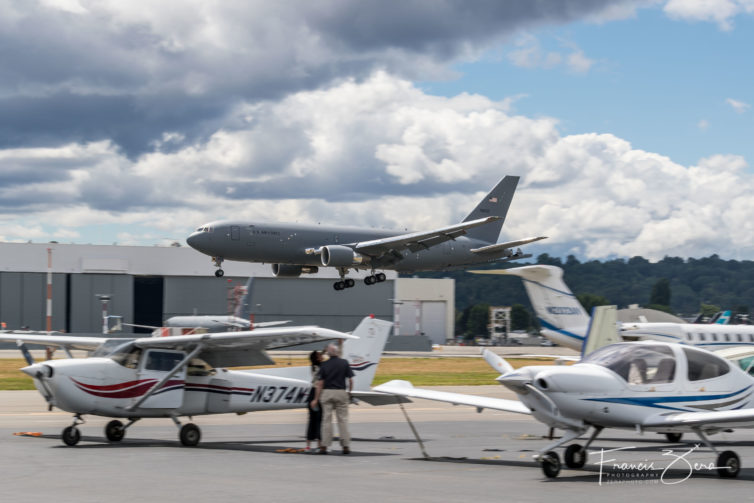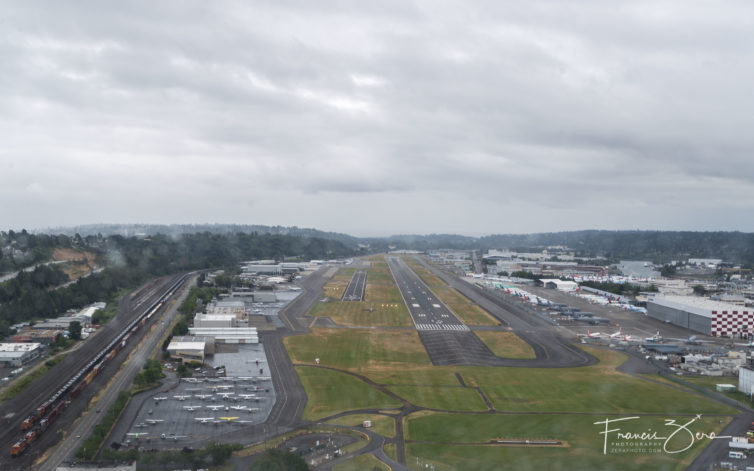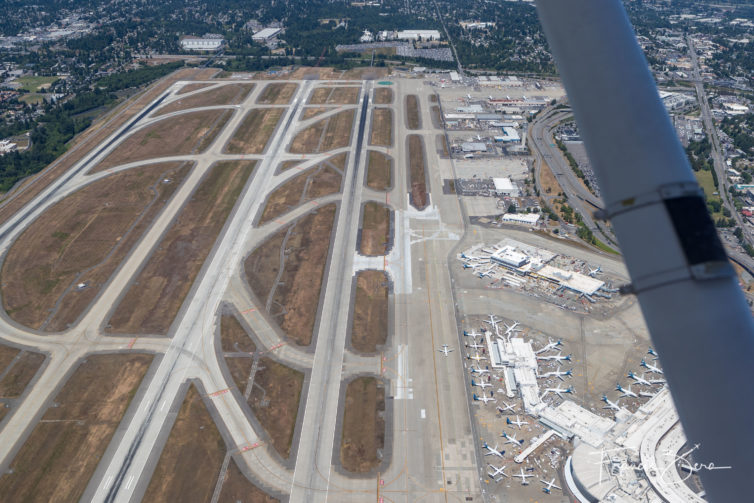
I told you Boeing Field’s airspace was busy. That’s a USAF KC-46 Pegasus tanker returning from a test flight and a biz jet taxiing to the right; Galvin’s ramp is in the foreground.
This is a continuation of my multi-part series on learning to fly. You can read the whole Fly With Francis series here.
I passed the FAA written exam two weeks ago. I’ve never been so excited about what amounts to a B+ on a test. But it was a solid pass, as a 70 (or the equivalent of either a C or C-, depending on where you’re from) is the minimum required.
Those free online practice tests are really helpful for exam prep, but I credit the combination of dedicating tons of spare time to studying, along with all of the knowledge and tips shared by Robin, our most excellent ground instructor.
You can’t just toss the books after the exam, though – keeping on top of this stuff seems to be a never-ending task, as several more exams of differing complexity await, as well as a series of so-called stage checks. These are flight-skill milestones, the first of which is probably the most daunting stage 1, which, if successful, sets you up to do your first solo flight, and the checkride done with a different CFI for both safety and evaluative reasons.

This is a view I’m getting very familiar with – the approach to 14L at BFI (the smaller runway on the left). We’re not yet lined up because we were dealing with a crosswind. I was a passenger in a friend’s plane for this photo, BTW
For the longest time, I’ve been struggling with overcontrolling the plane at the last few seconds of the landing process. The idea is to do the approach lined up on centerline and staying on the glideslope, which I at least feel like I’ve got a decent handle on.
As the plane gets to the last few feet above the runway, you’re supposed to catch the descent and settle into ground effect, which is, basically, a situation in which the plane is sort of floating on a cushion of air something less than one wingspan above the ground. From there, you set the plane down smoothly on the main wheels, and fly the plane down the runway to a point where the wings are no longer generating enough lift to fly and the plane settles to the runway.

We overflew Sea-Tac Airport (SEA) on a recent flight back from the Olympic Peninsula. The route is called the Mariner Transition, and it requires both advance permission and active coordination from air-traffic controllers at SEA.
Practice makes perfect, though, and over the past few flights it finally feels like I’m starting to get the hang of things, at least now recognizing the point at which the plane enters ground effect and understanding a bit better about how gently (or, frustratingly, how not gently) to handle the controls.
That, and steering the plane to centerline with the rudder and not the control yoke. The instinct to steer the plane with the yoke is hard to overcome for someone used to driving a car – “steering” with the yoke activates the ailerons, dipping one wing and causing the plane to actually veer farther off course. Frustrating, and a bit confusing when all sorts of stuff is going on during the last bit of the approach.
Speaking of frustrating, then there’s the radio. Talking with ATC while still getting the hang of the whole flying thing, and having to both accurately understand and read back their instructions, still causes a bit of fluster for me. Apparently it’s also not an uncommon issue – Carl often just smiles and shrugs after he has to jump in and correct my botched radio calls.
We’ve also visited a few new airports – Tacoma Narrows (TIW), Bremerton (PWT), and Paine Field (PAE). I’m also in possession of the initial paperwork (read: more written tests) to begin the solo process, something that I’m oddly simultaneously excited and terrified about.
But that’s all part of the fun, I suppose.